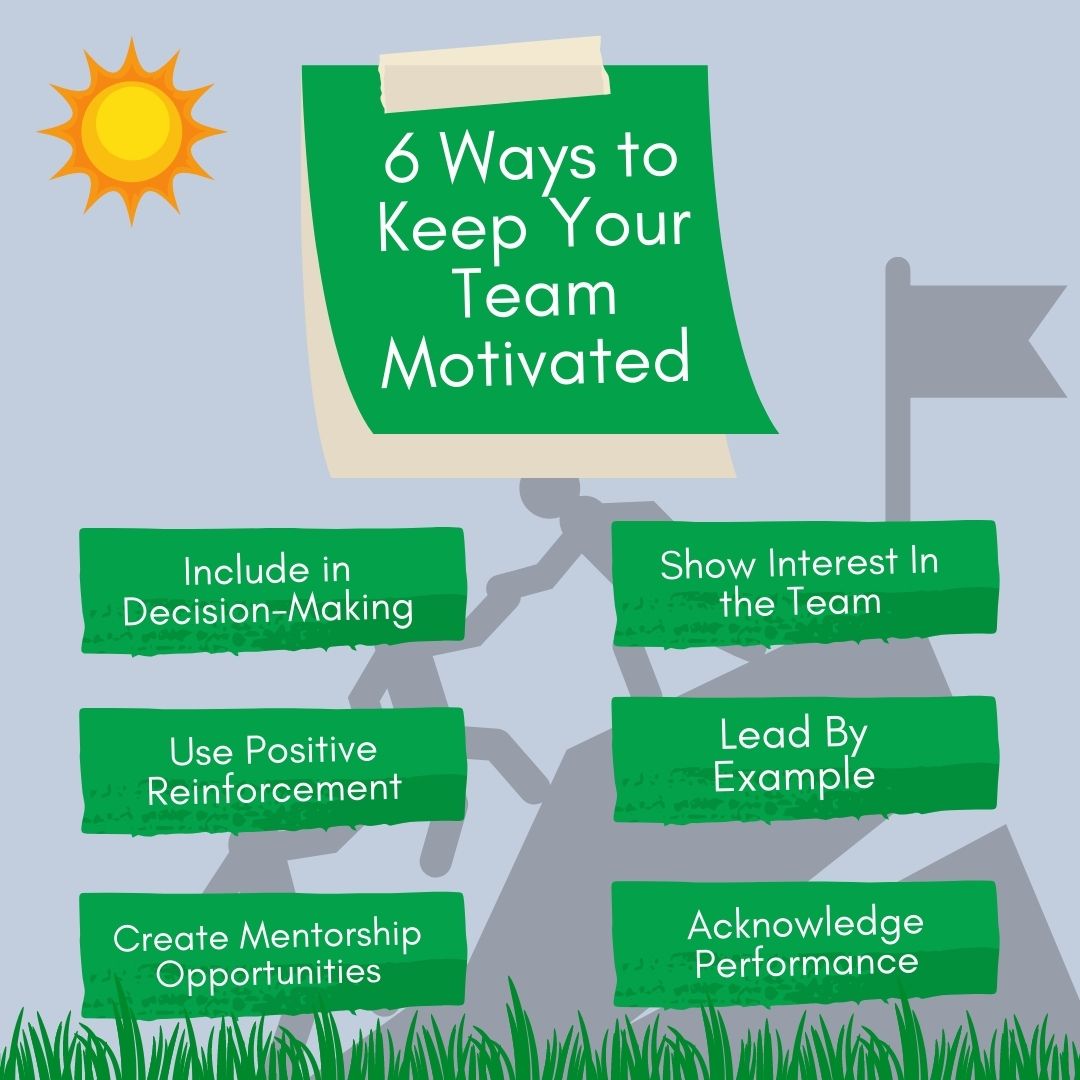
Seasonal and lower-wage positions are common for many maintenance teams. Parks maintenance managers often struggle to keep these employees motivated.
We all wish our budgets had enough money to pay higher rates for all the help, but budgets only stretch so far. While pay can be a strong motivator, it’s not the only thing compelling people to show up and do their duties each day.
This article discusses ways managers can keep their teams motivated, invested, and positive. The good news: These are relatively simple (and free) things that can have a big impact.

Include in Decision Making
We all have a voice. It feels good to be heard. One way to help keep your staff engaged is by allowing them to have a say in decision-making.
The maintenance staff does the work every day. They likely have valuable insights into how to schedule and complete tasks. By allowing them to offer input, they feel more invested in the organization. If one of their suggestions gets used, they’ll likely work harder to prove the suggestion was a successful idea.
Of course, just because employees give input doesn’t mean it’s the final say. Some employees have a narrow focus, and not every suggestion serves the organization's big picture. Consider the advice and use it to create solutions. Explain why a request may not be the best option without feeling the need to make excuses for every idea that comes along.
Creating an open atmosphere where employees feel like their suggestions are heard and considered requires an inclusive mindset, good communication skills, and the willingness to share power.
Show Interest in the Team
Find ways to show respect and appreciation daily. When these gestures are genuine, little check-ins go a long way in how individuals view a manager.
A leader that shows concern and interest makes employees feel more connected to the organization. Instead of developing an “us versus them” mentality, the employees are an invested part of the team.
A simple hello, chat, smile, or pat on the back transcends employees’ language or class barriers and shows how you value their service to the organization.
Use Positive Communication
We’ve all had those bosses that tell us what we can’t or shouldn’t do. Or what we did wrong. And yes, sometimes managers have to address mistakes or poor decisions as they come up.
But what if this was the exception?
What if a manager spent most time focused on the positive?
After all, negativity breeds negativity.
Positive communication focuses on what makes people feel good, invested, and motivated in their job performance. It includes focused listening, empathy, and ensuring your nonverbal communication aligns with your message.
Tell employees what’s expected of them--not what they shouldn’t do. Give clear instructions in a polite but firm manner. Chances are the job will get done.
Lead By Example
Studies have shown that many people learn best when their training includes physical and mental engagement. When trainees see someone else doing a task and can follow that lead, they learn quicker and more accurately.
Successful leaders devote time to training individuals personally. They take a vested interest and show employees the best way to complete a task. Demonstrating how to do something showcases the manager’s knowledge about a task and willingness to participate as part of the team effort.
Leading by example also ensures:
- The task gets taught correctly
- Questions can be addressed immediately
- The trainee gets immediate feedback
- Trust and respect get established
Obviously, most managers have many other responsibilities than their subordinates so time management is critical. Taking a little extra time to roll up the sleeves and train an individual the right way may be a great way to boost motivation and morale.
Create Mentorship Opportunities
Connecting new employees with senior employees in a mentorship program provides opportunities for both the mentor and mentee.
A good mentor will help an employee:
- Learn tasks correctly
- Develop skills to succeed at the job
- Stay encouraged and accountable
- Learn through feedback
- Network and feel more comfortable in the team
- Make better decisions
- Find direction in their careers
Furthermore, the mentor uses the arrangement to practice leadership, communication, and viewing new perspectives. A mentor is also in a great position to spot new talent and give managers insights about an employee's performance.
Acknowledge Performance
All too often, workers hear about their work performance when something goes wrong. Or they have to do something extra.
Many workers go about their days and weeks competently completing their tasks with little or no acknowledgment. It’s easy to see how they can feel unappreciated, unrespected, and taken for granted.
Complimenting workers for good performance builds morale and loyalty. Providing personalized instant recognition from managers can make even low-wage workers feel more pride in their responsibilities.
Informal recognition can effectively improve morale and motivation--with little or no cost. Let’s face it, everyone likes a little praise now and then. It doesn’t have to be a big deal, just something as simple as:
- Personally congratulating an employee
- Writing a quick personal note thanking them for a job well done
- Acknowledging an individual during a team meeting
- Using performance for employee evaluations and promotions
The Takeaway
Most of us go to work to pay the bills. But there is so much more to our jobs than collecting a paycheck. When employees feel valued, heard, and appreciated, they’re more motivated to do their part to serve the maintenance team.
The things listed above may not sound like much, but they could greatly impact workplace culture, employee retention, and the development of a motivated team.
